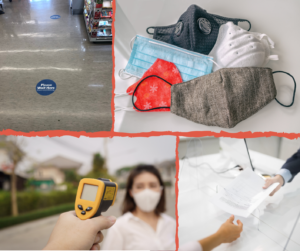New PPP Forgiveness Rules for Past, Current, and New PPP Money
The new Paycheck Protection Program (PPP) law enacted with the stimulus package adds dollars to your pockets if you have or had PPP money.
Further, if you are going to apply for PPP money for the first time, the favorable rules apply to your newfound tax-free money. The PPP money comes to you in what appears to be a loan. Loans usually have to be paid back, however done correctly PPP loans can be 100% forgivable. You heard right!
This applies to your past PPP loan, the PPP loan you have outstanding, and the PPP loan you are about to get if you have not had one before.
So, have your cake and eat it too.

Here is how it works:
Loan Proceeds Are Not Taxable
The COVID-related Tax Relief Act of 2020 (CARES) reiterates that your PPP loan forgiveness amount is not taxable income to you.
Expenses Paid with Forgiven Loan Money Are Tax-Deductible
In a previous article, PPP v IRS we discussed how the IRS wanted to make expenses paid with PPP money non deductible. Now don’t get mad at the IRS this had to do with the way the Tax act was written. To make these expenses deductible Lawmakers had to change the law, so they did! Yeah Lawmakers!
This is lawmaker speak for the intention of the CARES act “no deduction shall be denied, no tax attribute shall be reduced, and no basis increase shall be denied, by reason of the exclusion from gross income.”
What this means to us non lawmaker speak people is, expenses paid with monies from a forgiven PPP loan are now tax-deductible, and this change goes back to March 27, 2020, the date the Coronavirus Aid, Relief, and Economic Security (CARES) Act was enacted.
Well if that is not a relief to companies who have the PPP, and used it correctly, I don’t know what is.
No Offset of PPP for EIDL Advance—Refunds Coming
Before this new law, if you had both an Economic Injury Disaster Loan (EIDL) advance and a PPP loan, your forgiveness amount was reduced by the EIDL advance.
Basically, if you receive a PPP loan you have to pay back the amount you received through the EIDL advance.
However, the Economic Aid to Hard-Hit Small Businesses, Nonprofits, and Venues Act. (That doesn’t have a cool acronym like the CARES act.)
- Eliminates the offset rule for all PPP loans, even those previously forgiven
- Requires the Small Business Administration (SBA) to set in motion rules for the lenders to return the EIDL advance money to PPP borrowers who had the money deducted from their forgiveness.
Once again Yay Lawmakers!

More Expenses Qualify for Forgiveness
The Paycheck Protection Program Flexibility Act of 2020 established that to achieve 100 percent forgiveness of your PPP loan, you had to spend
- The entire loan proceeds on covered expenses (defined as payroll, rent, interest, andutilities),
- And at least 60 percent on covered payroll.
To define what has not changed and what has:
-
No Change
- 60% to cover payroll
- non-payroll covered expenses of defined rent, interest, and utilities
-
New Non-payroll expenses
- Operations expenditures:
- business software or cloud computing service that facilitates business operations
- product or service delivery
- the processing, payment, or tracking of payroll expenses
- human resources
- sales and billing functions
- accounting or tracking of supplies
- inventory, records, and expenses
- Property Damage Costs:
- Costs related to property damage and vandalism
- Looting due to public disturbances that were not covered by insurance or other compensation
- Supplier cost:
- What you paid suppliers for goods purchased, that are essential to the operations of the business. (there is more fine print but this article is getting long, please contact us for more details)
- Worker protection costs:
- Cost related to keeping your workers safe: sanitation, social distancing, customer safety requirements related to COVID-19,
- Adaptations made to facilities to comply with requirements established or guidance issued by the Department of Health and Human Services (DHHS), the Centers for Disease Control and Prevention(CDC), or the Occupational Safety and Health Administration(OSHA), or any requirements issued by a state or local government.
- Operations expenditures:

Here are some examples worker protection expenses including expansions or renovations:
- a drive-through window facility
- an indoor, outdoor, or combined air or air pressure ventilation or filtration system
- a physical barrier such as a sneeze guard
- an expansion of additional indoor, outdoor, or combined business space
- an on-site or off-site health screening capability
- other assets as determined by the departments of Health and Human Services and Labor.
Here is some WONDERFUL news for businesses that have less than $150K loan! I will admit that after filling out these forgiveness requests, this is a HUGE deal!
For PPP Loans of $150,000 or Less, New One-Page Forgiveness Form
Because, of course there are always loopholes, this only forces the SBA to create a new one page loan forgiveness. The caveat is it does not change any rules, and doesn;t designate the font size. Which means the SBA can basically shrink the onl form to fit into one sheet.
Ahhh! you have to love loopholes.
On this new form borrowers must still provide the information below:
- describe the number of employees retained because of the covered loan
- estimate the covered loan amount spent on payroll costs
- note the total loan value
- attest that he, she, or it accurately provided the information and complied with the PPP loan expenditure requirements
As we mentioned, the new form for loans of $150,000 or less appears to make things easier, but it does not change a single requirement.
Here is the buyer beware announcement: The new form comes with the same baggage as the old. Play it safe and use the forms 3508EZ or the 3508 when you apply for PPP loan forgiveness. for those of you who need help filling this form out, contact us for assistance at info@cdprofessionalservices.com
If you take anything from this article, remember that to achieve 100 percent forgiveness, you must spend at least 60 percent of the loan on covered payroll costs. With 24 weeks at your disposal, you likely can spend the entire loan on payroll and not consider the other categories at all.
For more articles like this, visit our website and blog.



